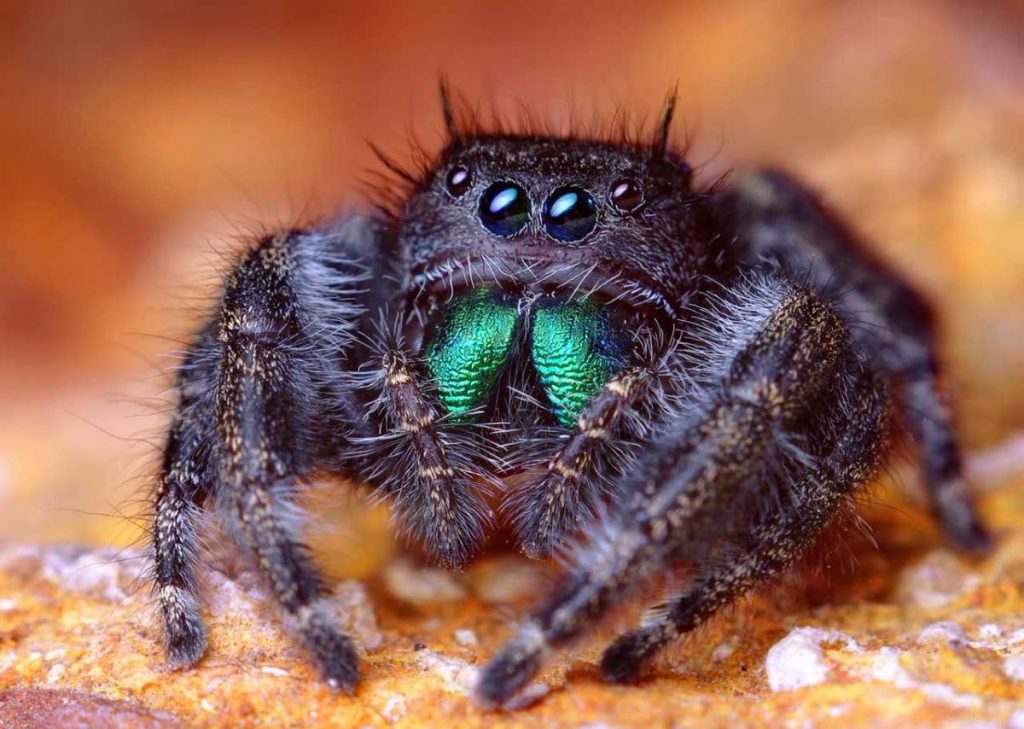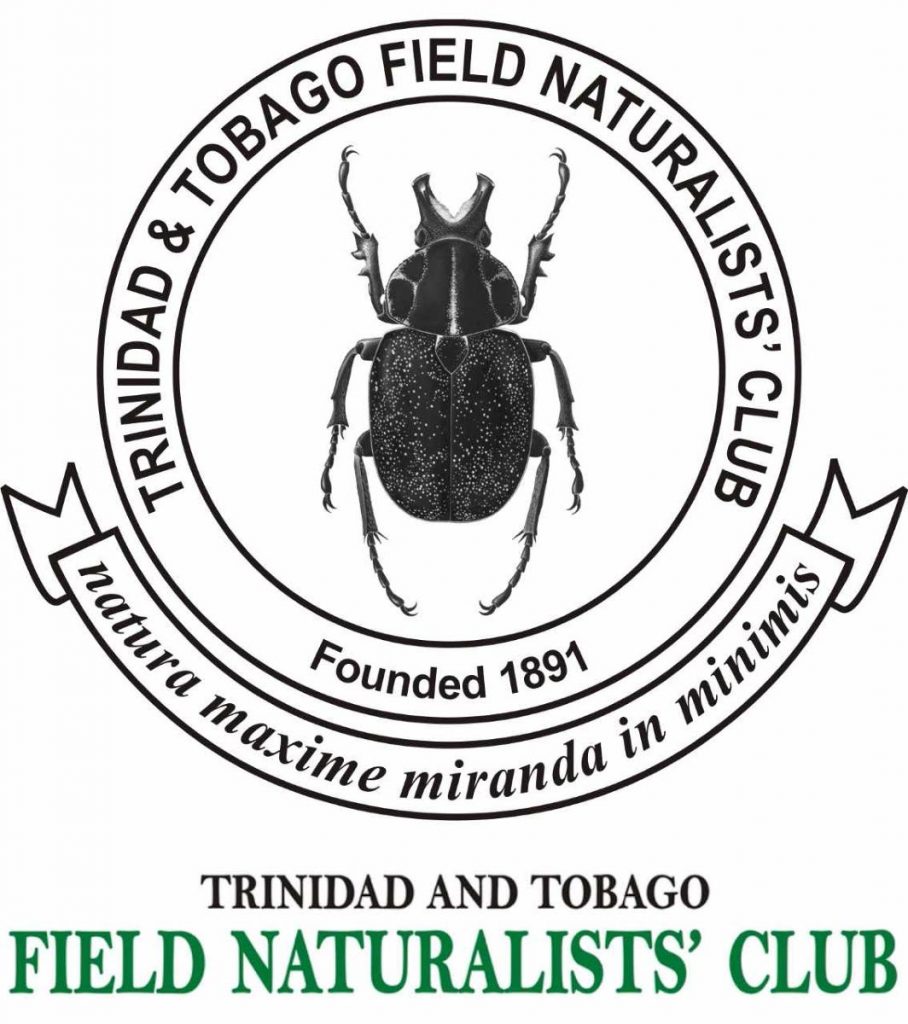Those not so scary spiders

JO-ANNE NINA SEWLAL
As October is the month of Halloween, perhaps the topic of spiders is appropriate. Spiders are generally not well-liked creatures and only seem to be embraced during this time of year (or if you are a fan of Spiderman). This article sets out to debunk some popular misconceptions about spiders and, since it is Halloween, give you a few somewhat scary facts on these creatures.
The first misconception is that spiders are insects. They are not –spiders belong to the taxonomic order Arachnida and are thus referred to as arachnids. How can you tell spiders and insects apart? Insects have six legs, antennae, wings and three body segments – head, thorax and abdomen. Spiders on the other hand have eight legs, two body segments where the head and thorax are fused together and are called a cephalothorax. Spiders also lack wings and antennae.
But it is easy to see why they are sometimes mistaken for insects as they have a short pair of “legs” near their head called pedipalps. These are used by females to help them to manipulate prey to feed on them. Meanwhile they act as reproductive organs in males, where the tips are modified to transfer sperm to females, just like the “squeezy” bottles that you find ketchup and mustard in fast food outlets. The eyes of insects are also quite different from those of a spider. Insects have compound eyes while spiders have as many as eight individual eyes. Some species have two, four or only six eyes. Spiders can look rather creepy with all those eyes.
Another misconception is that all spiders build webs. All spiders produce silk, but not all species use it to construct webs. The primary job of webs is to act as a snare to entangle prey that either flies or is blown into it. Spiders use silk for a variety of reasons. The most obvious reason is to wrap up their prey, but juveniles and smaller species also use it as a means of transport. They release a line of silk which catches in the wind and carries them along with it like a balloon, hence this is also called “ballooning”. When they reach their desired destination, they simply let go. Jumping spiders do not construct webs, but use their silk to stitch together the edges of leaves to form a “sleeping bag” when they turn in for the night.
Another misconception is that all spiders make cobwebs. There are many spiders that do not spin webs. Spiders that do build webs use a variety of designs. The most common is the orb-web, which is the one we see in storybooks or at Halloween. These webs are roughly circular and filled by a series of concentric circles that get progressively smaller towards the middle of the web. The entire web is divided into sectors by separate silk threads, resembling a pizza cut into slices. Other designs are rectangular like a sheet, while others comprise just a tangle of silk. Some webs are more complex such as the “bowl and dolly” design where one part of the web is curved upward to resemble a “bowl” while the bottom half looks like a saucer. It is so called as it was initially thought to resemble glass candy bowls filled with sweets that would sit on an intricately crocheted doily often at one’s aunt’s or grandmother’s house.
Getting dressed up is a common practice during Halloween and some spider species are experts at this. Those belonging to the family Thomisidae, which are commonly referred to as crab spiders, are particularly adept, with some species disguising themselves as flowers or an innocent pile of bird poop, in order to catch their unsuspecting victims.
Other spider species mimic insects – often ants. So much so that there are over 300 species of ant-mimicking spiders. Their evolution includes their body having the same constrictions as ants, holding out their first pair of legs out in front of their body to mimic antennae and coloured patches around their eyes to make them resemble an insect’s compound eyes. This adaptations allow them to walk undetected among colonies of ants (the favourite food) of these spiders.
People are also curious as to what spiders eat. Although their diet is mainly comprised of insects, some species supplement it with pollen and nectar. There are some species that need a larger protein source such as fish which is the main prey of the family Pisauridae commonly referred to as fishing spiders. The largest member of this family belongs to the genus Dolomedes and can reach lengths of up to 30cm, so they are quite capable of catching a fish. Yes - they are found in TT.
Then there is the lovely orb-weaving spider Eriphora atrax (sorry, no common name!). This species has been known to eat small bats if they are unlucky enough to get caught in her web. And yes, this is also found in Trinidad. Finally, spiders eat each other. Some spider moms even sacrifice themselves by letting their offspring eat them as a means of providing them with a substantial food source to start their lives.
Probably the greatest spider-related concern is, “will I die from a spider bite?” Throughout the world, there are several species of spider that pose a threat to human life. As with silk production, all spiders produce venom, but there are a few factors that determine if their bite is fatal, such as the size and strength of its jaws which will determine if it can penetrate your skin. Also the amount of venom injected has to be considered. It is unlikely that the spider would inject all of its venom into you as this venom is not only needed as a means of defence but also to immobilise prey.
So, if it did inject all of its venom it will have to wait until its body manufactures more before it could hunt, during which time it would be vulnerable to attack by predators. There are some features that will put a person at a greater risk of dying which include the very young, the very old and those that are already ill where there immune system is already strained.
There have been no recorded deaths in TT resulting from spider bites, but there are a few species that you should be careful around. The Brown Widow, Lactrodectus geometricus is the cousin of the infamous Black Widow. Bites from a Brown Widow can result in a variety of symptoms depending on the bitten individual’s reaction to the venom, ranging from muscle pains and cramps, fever to becoming comatose.
Cheiracanthium inclusum, commonly referred to as the yellow sac spider, is another species to be wary of. Bites from this species can result in a rash, fever or a necrotic lesion (which does not leave a scar), in persons who are allergic. Both of these inconspicuous species can be found in locations in our homes such as corners of walls, ceilings and window sills, which increases the possibility of you running into and being bitten by one of these spiders.
Are spiders important to our environment? Spiders are sensitive to habitat change and occupy a mid-level position in terrestrial food webs so that they act as food for organisms in higher levels and prey on those in lower levels. Therefore their presence in an ecosystem influences a wide range of organisms and they are suggested to be an important factor in ecosystem stability because they stabilise arthropod populations. In this respect they can also be used as biological indicators with respect to the health of an ecosystem.
Are spiders really a big deal in TT? There are over 300 documented species found here, but it is estimated that we are home to approximately 1,000 species. Trinidad and Tobago are continental islands, and as we separated from the South American continent, we brought with us the established ecosystems and flora and fauna that they contain, including spiders.
So while you might not be inclined to go out and find a spider to cuddle, at least you can keep in mind the many misconceptions that surround these innocent mini-beasts. After all, we are surrounded by spiders, so hopefully you have now been convinced that they are not that scary after all? Happy Halloween!

For more information on our natural environment, you can contact the Trinidad and Tobago Field Naturalists’ Club at admin@ttfnc.org or visit our website at www.ttfnc.org and our Facebook or YouTube pages.
Photo courtesy Thomas Shahan


Comments
"Those not so scary spiders"